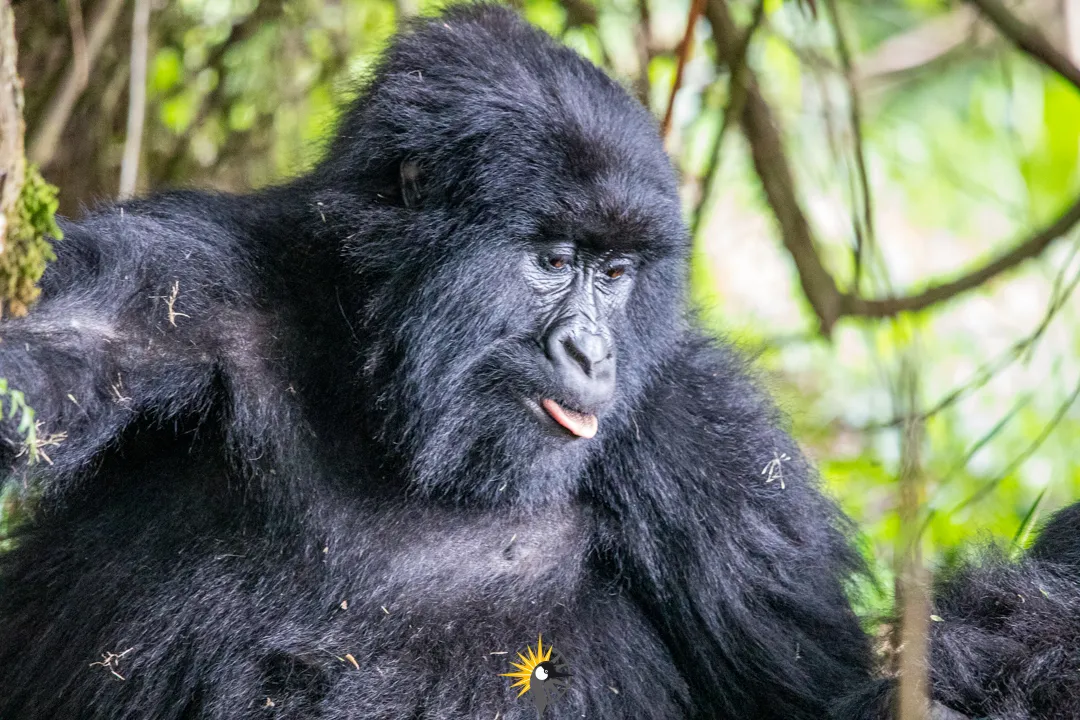- COMMON NAME:Mountain Gorilla
- SCIENTIFIC NAME:Gorilla beringei beringei
- TYPE:Mammals
- DIET:Omnivore
- GROUP NAME:Troop, band
- AVERAGE LIFE SPAN IN THE WILD:35 years
- SIZE:Standing height: 4 to 6 feet
- WEIGHT:300 to 485 pounds
The majestic mountain gorilla, with its imposing presence and gentle demeanor, stands as one of the most captivating creatures on Earth. Nestled within the dense forests of Bwindi Impenetrable forest national park, Mgahinga Gorilla National Park in Uganda, Volcanoes National Park in Rwanda and Virunga National Park in Democratic republic of Congo, these enigmatic primates offer a glimpse into a world where strength, intelligence, and familial bonds intertwine. In this comprehensive guide, we delve into the world of mountain gorillas, exploring their habitat, behavior, conservation status, and the unparalleled experiences they offer to those fortunate enough to encounter them.
The Lives, Behavior, Social Structure and of Mountain Gorillas
Social Structure
Mountain gorillas live in cohesive family groups led by a dominant silverback male, which typically consists of several females and their offspring. The silverback is responsible for leading the group, protecting its members from threats, and resolving conflicts within the group.
Communication
Gorillas communicate through a variety of vocalizations, including grunts, roars, and hoots, as well as through gestures such as chest-beating, which can convey dominance or aggression. They also use body language, facial expressions, and grooming behaviors to maintain social bonds within their groups.
Feeding Habits
Mountain gorillas are primarily herbivorous, with their diet consisting mainly of leaves, shoots, stems, and fruits from a wide range of plant species found in their habitat. They spend a significant portion of their day foraging for food, using their powerful jaws and teeth to break down tough vegetation.
Reproduction and Family Life
Female mountain gorillas give birth approximately every four years, with gestation lasting around eight and a half months. Infant gorillas are completely dependent on their mothers for care and protection, and they maintain a close bond with their mothers for several years after birth.
Conservation Efforts and Challenges Facing Mountain Gorillas
Threats to Survival
Mountain gorillas face numerous threats to their survival, including habitat loss due to deforestation, poaching, disease transmission from humans, and civil unrest in the regions where they reside. These threats have contributed to their status as critically endangered, with only an estimated 1,000 individuals remaining in the wild.
Conservation Initiatives
Despite the challenges they face, mountain gorillas have become a flagship species for conservation efforts in East Africa. Organizations such as the Dian Fossey Gorilla Fund International, the International Gorilla Conservation Programme, and the World Wide Fund for Nature (WWF) have been instrumental in implementing conservation initiatives aimed at protecting gorilla habitats, combating poaching, and promoting sustainable tourism.
Ecotourism and Gorilla Trekking
One of the most effective conservation strategies for mountain gorillas has been the development of ecotourism programs that allow visitors to observe gorillas in their natural habitat while generating revenue for local communities and funding conservation efforts. Gorilla trekking experiences, which involve guided hikes through the forests to encounter wild gorilla groups, have become increasingly popular among tourists seeking immersive wildlife encounters.









